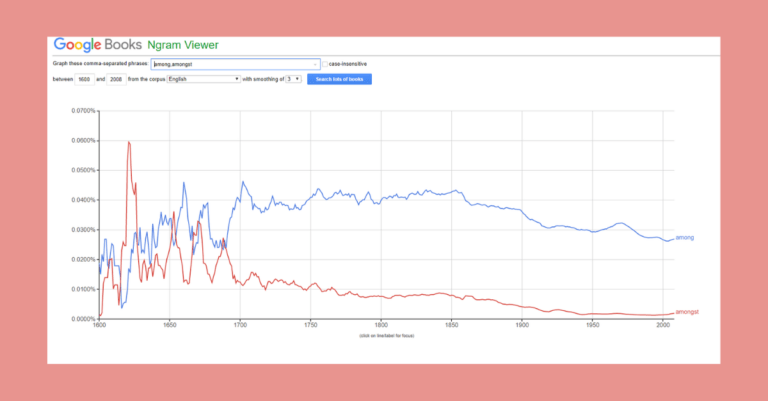People sometimes ask about the difference between among and amongst. Both words mean the same thing, but among is the older form and is now more commonly used in the United States, whereas amongst is more commonly used in Britain.
For example, Google’s Ngram viewer suggests the word “amongst” appeared far more frequently in literature in the early 1600s. Among and amongst waged war between book covers for decades until around 1690, after which among grew to become the more popular form of the word. (In literature, at least.)
The Origin of ‘Among’ and ‘Amongst’
Among and amongst are both extremely old words, going all the way back to Old English and showing up in some of the oldest known English manuscripts, including the West Saxon Gospels. According to the Oxford English Dictionary, they were originally two words—on and gemang—which meant “in a crowd.”
Stick with ‘Among’
Amongst is considered archaic and overly formal or even pretentious in American English. The only time I can think of when it would be appropriate for an American writer to use it would be in fiction set in a different era or world. Something like this:
- Is it truly safe to walk amongst the peasants, my lord?
- Dear listeners, I hope this trifling is amongst your favorites for the week.
‘Among’: Examples from Literature
- Among other things, you’ll find that you’re not the first person who was ever confused and frightened and even sickened by human behavior. — Catcher in the Rye
- You see I usually find myself among strangers because I drift here and there trying to forget the sad things that happened to me. — The Great Gatsby
- ————–
Source: Garner, B. Garner’s Modern American Usage, 3rd Edition. Oxford University Press, 2009, p. 42.
Image Courtesy of Shutterstock.




